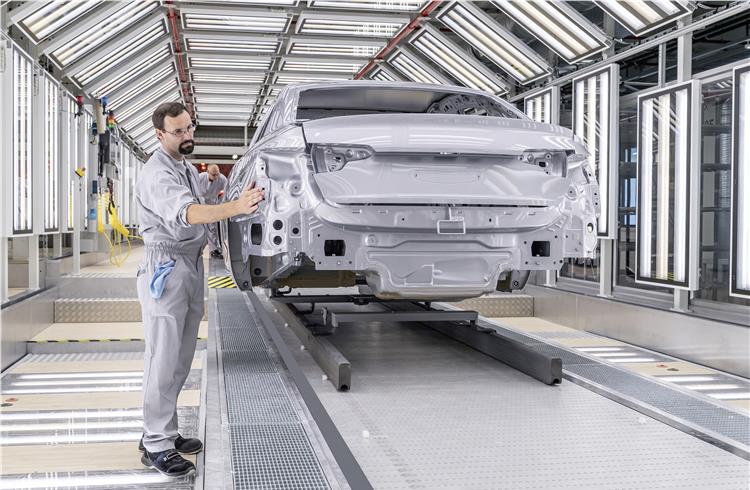
How to Prep a Car for Paint: Essential Steps and Tips
Share
When it comes to achieving that immaculate finish on your car, knowing how to prep a car for paint is crucial. Whether you're talking about a complete makeover or just a touch-up, preparation is the key to success. Today, we will guide tech professionals and automotive enthusiasts through the nuanced process of prepping a vehicle for painting, ensuring a smooth and professional finish.

Understanding the Importance of Preparation
Many people underestimate the role of proper preparation in car painting. Skipping any of the necessary steps can lead to unsatisfactory resultsthink peeling paint, unsightly bumps, or color mismatches. By dedicating the time to prepare your car correctly, you lay the foundation for a stunning exterior that could very well turn heads.
Gathering the Right Tools and Materials
Before diving into the prep work, gather the following tools and materials:
- Sandpaper (various grits)
- Primer
- Paint (match to original color)
- Masking tape
- Drop cloths
- Clean rags and detergents
- Protective gear (gloves, mask, goggles)
Having everything on hand will streamline the process, allowing you to focus on the task at hand. Additionally, you can find invaluable advice on prepping a car for paint to create a professional look.
Step-by-Step Guide to Prepping your Vehicle
Now that we have our tools and materials ready, lets jump into the step-by-step process of prepping your vehicle for a fresh coat of paint.
Step 1: Clean the Car Thoroughly
Start by washing your car to remove any dirt, grime, or old wax. Use a mixture of car-specific detergent and water to scrub every surface, making sure to pay attention to the seams and edges. Rinse it off and let it dry completely, as any moisture can hinder the painting process.
Step 2: Assess the Current State of the Paint
Examine the existing paint job closely. Look for scratches, dents, and rust spots that need attention. If there are chips in the paint, they should be patched up before proceeding. For surface rust, it's wise to use a rust converter followed by sanding.
Step 3: Sand the Surface
To ensure the new paint adheres properly, youll need to sand the surface. Start with a coarser grit sandpaper (around 80-120 grit) to remove the clear coat and smooth out imperfections. Then switch to finer sandpaper (around 320 grit) for a smooth finish. Don't forget to sand down any areas where you patched up scratches or dents.
Step 4: Mask Off Areas
Use masking tape to cover any parts of your car that you do not want to paint, such as windows, trim, and wheels. Be meticulous in covering edges to ensure crisp lines and protect areas that may be sensitive to paint overspray.
Step 5: Apply Primer
Once sanding is complete, its time to apply primer. Choose a primer that matches the type of paint youll be using. Spray the primer evenly over the surface and allow it to dry according to the manufacturers instructions. This forms a barrier between the new paint and the old surface.
The Benefits of Using Quality Paint Products
When you're looking to achieve the best possible results, always opt for high-quality paint products. Cheap materials can lead to poor adhesion and a lackluster finish. For a guide on perfect paint jobs, check out industry-backed resources.
Step 6: Sand Again and Clean
After the primer dries, you will want to sand it down lightly using a finer grit sandpaper. This will help create a smooth surface for the paint. After sanding, wipe the car down with a clean cloth to remove any debris before moving on to the painting stage.
Step 7: Time to Paint
With the prep complete, its time to paint! Follow these guidelines while painting:
- Work in a well-ventilated area.
- Apply thin coats to prevent drips and runs.
- Let each coat dry fully before applying the next.
- Consider using a clear coat for added protection.
Finishing Touches: Polishing and Protecting
After the final coat of paint has dried completely, wait at least 24 hours before you start to polish. Polishing helps to bring out the shine in your paint job and remove any imperfections.
For long-lasting results, consider applying a protective wax or sealant to keep your paint looking vibrant and new.
Common Mistakes to Avoid
Finally, here are some common pitfalls to steer clear of:
- Skipping steps: Never skip cleaning or sanding steps.
- Using the wrong products: Always use manufacturer-recommended products.
- Ignoring the environment: Avoid painting in humid or windy conditions.
For additional insights on making your car paint last, visit painting cars guide.

Frequently Asked Questions
What is the best temperature to paint a car?
The ideal temperature for painting is usually between 65 to 75 degrees Fahrenheit (18 to 24 degrees Celsius). Be sure to consult the paint manufacturer's guidelines.
How long does it take to prep a car for paint?
The prep time can vary, but it generally takes from a few hours to a full day, depending on the level of service you're providing.
Can I prep the car myself?
Yes! With the right tools and patience, prepping your car for paint can be a satisfying DIY project.
By following the steps outlined above, you can effectively prepare your car for paint, achieving professional results while enjoying the process. Remember, the more detailed and careful you are, the better your results will be. For further reading on automotive paint, check out this informative article on automotive paint.
